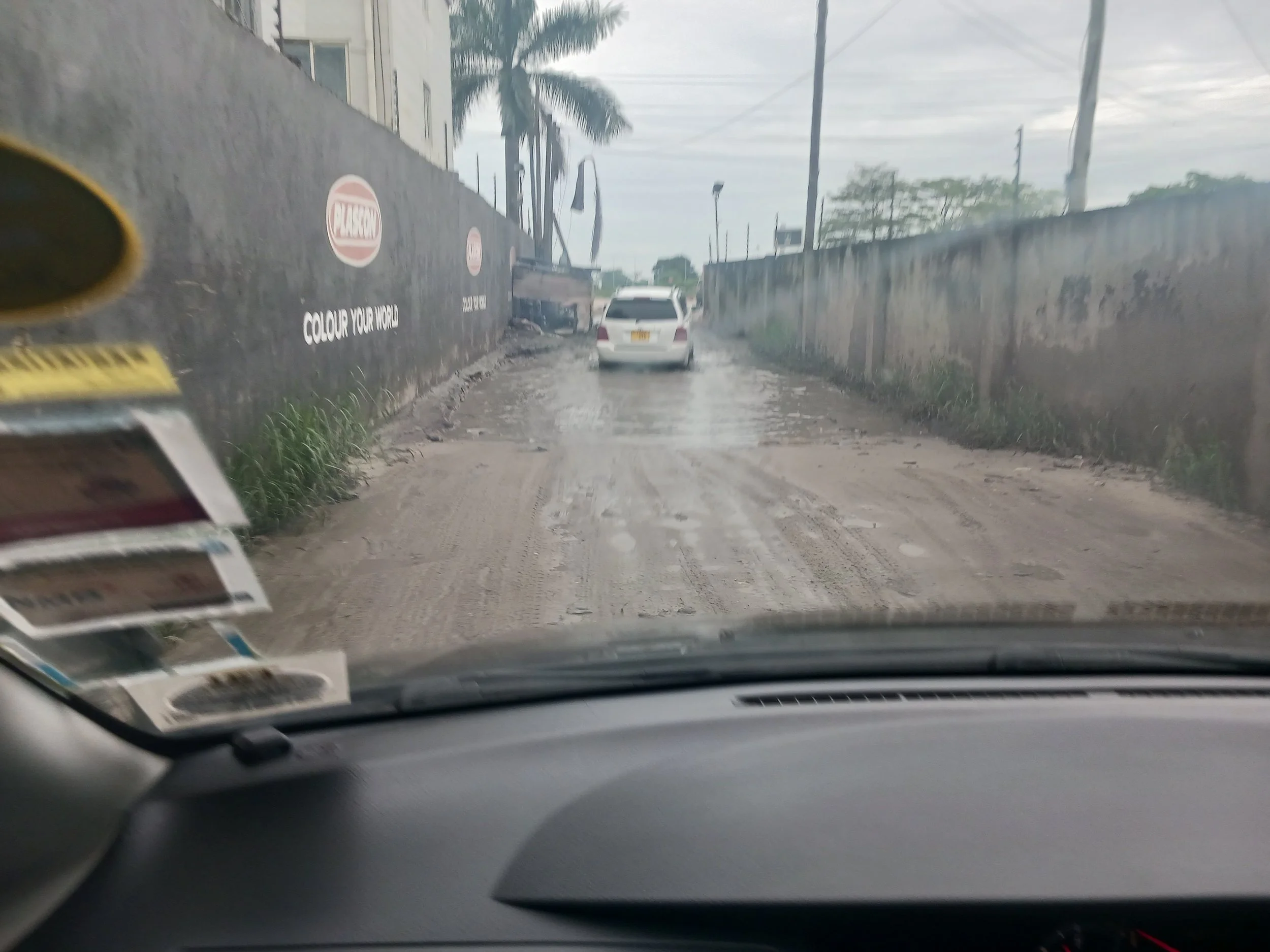“Are you sure your seatbelt is fastened properly? It’s going to be a rough ride.” Nyazali, the hotel driver, seemed almost over-solicitous as I buckled up in the front seat of his KIA van.
How rough could it be? It wasn’t as if we would be driving over rutted dirt roads to a remote wildlife lodge in the Serengeti. By my Google calculations, it was less than a mile from the Dar es Salaam international terminal to the Transit Airport B&B. I travel light and thought briefly about walking but knowing I would be arriving late at night and that Tanzania was still in the long rainy season, I emailed the establishment and asked for a car. Nyazali with his handwritten “Karibu [welcome] David Mould” sign was waiting in the arrivals area.
I decided the seatbelt instruction was just a kindly reminder to an exhausted traveler. By the time I reached Dar es Salaam, I’d been travelling for almost 26 hours from Charleston, WV (via Atlanta and Amsterdam).
From my last working visit to Dar in September 2023, I remembered that traffic moved slowly on the main road from the airport to downtown because of construction to widen and resurface the roadway. As far as I could tell, there had not been much progress in the last eight months. We bumped along a stretch where the blacktop had been removed, then turned off onto a darkened dirt road, passing dimly lit roadside stalls. Nyazali slowed down even more. We were about to enter a new dimension of potholes.
We encountered the first crater lake—a deep depression in the dirt road where rainwater had accumulated. Nyazali knew what was coming so we edged rather than plunged into it. We pulled up out of the water on the other side, then almost immediately descended into the next crater. And so it went on, riding up and down and dodging the occasional protruding concrete blocks and posts for another half mile to the hotel.
You don’t need to be a civil engineer to figure out that a dirt road without bricks, stone or some kind of fill to form a solid base will settle, buckle, wash away and eventually turn into a series of small summits and valleys. Tanzania has two rainy seasons—the long one called masika from mid-March to May, and the short one called vulu from November to mid-January. The heaviest tropical rains usually come in the late afternoon and last through the evening, although some days it rains all day and all night.
Dar lies on the coastal plain and flooding is common in low-lying neighborhoods. There are no drains on the dirt streets so when the rains come, the water just sits in the craters. It’s not only a flooding and sanitation hazard but a breeding ground for mosquitoes.
I only realized how hazardous the journey had been on the return trip to the airport in daylight. At least, the concrete obstructions were visible and the main traffic hazards came from boda boda, the motorcycle taxis that many residents take to travel to work or school.
Dat, the largest city in Tanzania and its commercial center, is growing fast. In 2023, its population was estimated at 7.75 million, with an annual growth rate of five per cent. That means more construction and more dirt roads.
The city has undertaken an ambitious and expensive roadbuilding program to relieve its notorious traffic jams. Some areas are served by new four-lane highways with a bus-only lane in the center, reducing congestion. Fixing the side streets is apparently not in the budget. You can speed along the highway but when you turn off, slow right down and hope the water isn’t too deep.

